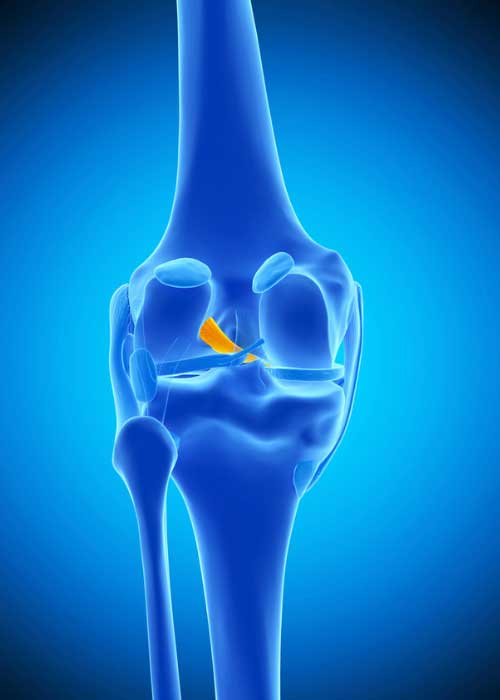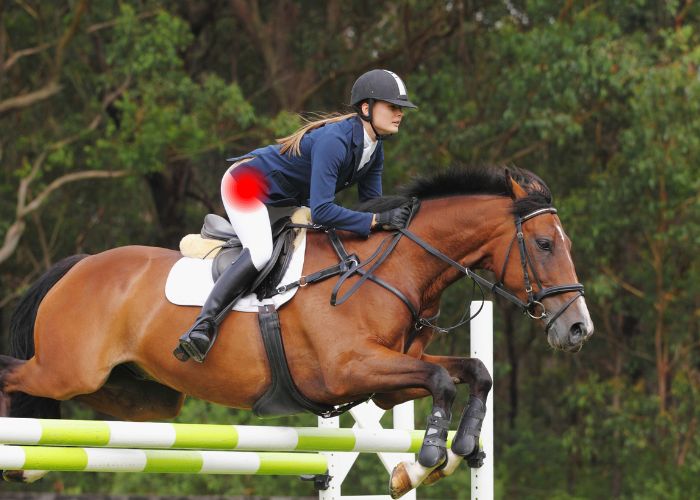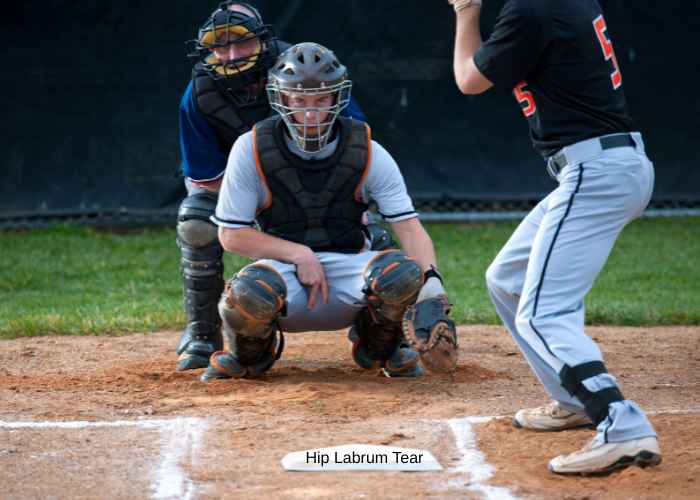Schedule an Appointment with ACL Injury Specialist
If you believe you are suffering from an ACL tear requiring an urgent appointment, we will do our best to provide a same-day or next business day appointment.

Do you participate in sports that involve jumping or quick twisting? If so, you may be at risk of injuring your anterior cruciate ligament or ACL. An ACL tear or injury is common among athletes and sports enthusiasts. ACL injury specialist, Doctor Ronak Mukesh Patel, provides diagnosis as well as surgical and nonsurgical treatment options for patients in Houston, Sugar Land, and Pearland, TX who have suffered an ACL knee injury. Contact Dr. Patel’s team today!
What is an anterior cruciate ligament (ACL) injury or tear?
Within the knee joint, four elastic tissue bands (ligaments) can be found. There are two cruciate ligaments inside the knee joint and two collateral ligaments outside of the knee joint. The anterior cruciate ligament (ACL) originates from the posterior femur (thigh bone) and travels diagonally through the center of the knee where it attaches to the anterior tibia (shin bone). The ACL functions in limiting forward and backward movement of the tibia in relation to the femur as well as providing joint stability with rotation. An injury to the ACL can result from the ligament being stretched beyond its limits causing the tibia to slip from under the femur. A direct blow to the knee, pivoting on a firmly planted foot, sudden stopping, or changing direction while slowing down can cause the ACL to be simply stretched or become partially or completely torn. ACL tears are a common knee injury with roughly 100,000 to 200,000 reported cases each year in the United States. Dr. Ronak Mukesh Patel, orthopedic knee specialist serving patients in Sugar Land, Pearland, and the Houston, Texas area, has the knowledge and understanding, as well as substantial experience in treating patients who have experienced an ACL injury.

Who is at risk for an ACL tear or injury?
Although ACL injuries are remarkably common among athletes of all ages and experience levels, there are certain factors that can increase the likelihood of sustaining an injury to the anterior cruciate ligament, as follows:
- Gender can affect one’s risk as women are two to four times more likely to experience an ACL injury than men. This can be attributed to differences in muscle strength, anatomy, and hormonal influences.
- Individuals with generalized hyper-laxity of joints (“loose jointed”)
- Athletes with poor training routines, poor conditioning, or those who use sports equipment that is inadequately maintained and/or improperly adjusted
- Artificial turf contributes to more ACL injuries than fields lined with grassy surfaces
What are the symptoms of an ACL tear/injury?
The most common complaint reported with an ACL injury is sudden and severe pain immediately following a knee injury. Oftentimes, a “popping” sound is heard at the time of the injury. Other symptoms of an ACL injury can include:
- Knee instability or sense of “shifting”
- Tenderness and pain along the joint line
- Decreased range of motion
- Pain and/or difficulty with weight-bearing
- Swelling and bruising of the affected knee
How is an ACL tear or injury diagnosed?
A medical history, including the initial injury or any other prior knee conditions, will be obtained by Dr. Patel followed by a thorough physical examination assessing knee range of motion, evaluating for areas of pain, and performing knee stability tests (lachman, anterior drawer, pivot shift). Diagnostic imaging may be requested to confirm an ACL injury. X-rays can identify if any bone-related injuries resulted from the knee injury. Magnetic resonance imaging (MRI) can confirm ligament damage as well as if any other structures within the knee joint (meniscus, cartilage) were also injured.
What is the treatment for an ACL tear or injury?
Non-surgical treatment:
Non-surgical therapies alone may be sufficient in treating an ACL injury for patients that do not require the ACL for daily or sports-related activities or do not experience knee instability. Applying a knee brace and weight-bearing with the assistance of crutches or a walker are often recommended. The pain and inflammation associated with this injury can be managed with a combination of RICE (rest, ice, compression, elevation) and non-steroidal anti-inflammatory medications (NSAIDs). When appropriate, Dr. Patel will design a physical rehabilitation program aimed at improving range of motion and restoring muscle strength.
Surgical treatment:
Surgical reconstruction of the ACL may be necessary to restabilize the knee joint for patients who desire to continue athletic activity especially with pivoting, cutting, and jumping, in the event of failed non-surgical therapy, or if a patient experiences a more severe or complex ACL tear. Reconstruction of the ACL can be accomplished through a minimally invasive arthroscopic surgical procedure using a small camera (arthroscope) and specialized surgical instruments. The damaged fragments of the ACL are excised and replaced with a cruciate tendon graft, either from the patient (autograft) or donor tissue (allograft). Dr. Patel utilizes a number of autograft options after discussion with the patient about the pros and cons of each and consideration of patient goals and expectations. Smaller incisions are utilized in this procedure thereby reducing the recovery time for patients to return to their normal daily activities.








